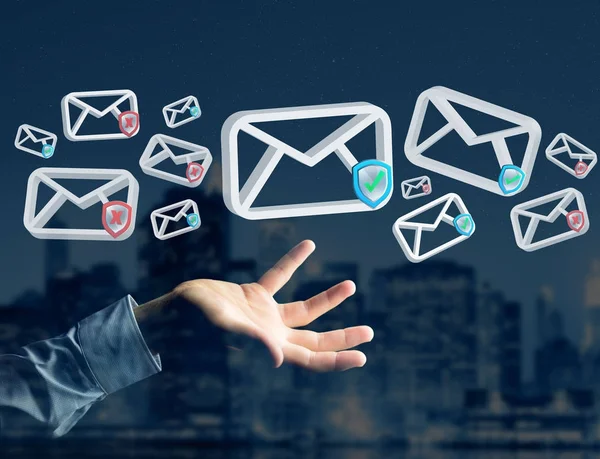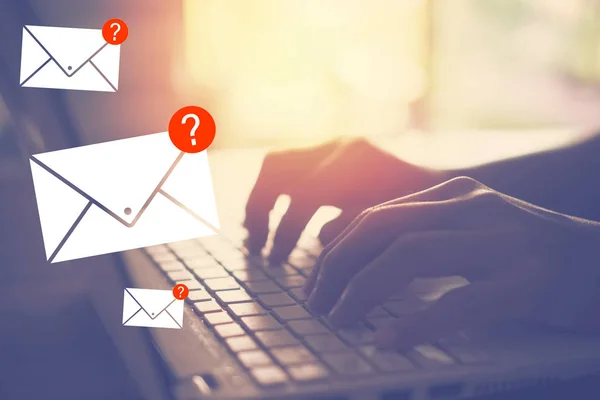Unveiling Email Security Secrets And Understanding What Is DKIM
In the intricate web of digital communication, where emails serve as the lifeblood of modern correspondence, the need for robust email security measures has never been more critical. In this era of cyber threats, phishing attacks, and online vulnerabilities, ensuring the authenticity and integrity of email communications has become a paramount concern for individuals and organizations alike. Among the arsenal of tools designed to safeguard email communication, DomainKeys Identified Mail (DKIM) emerges as a key player.
This article embarks on the journey of demystifying DKIM, peeling back the layers to unveil the secrets behind email security and providing a comprehensive understanding of what DKIM truly is. As we delve into the realm of DKIM, we aim to shed light on its fundamental concepts, unravel the cryptographic intricacies that underlie its functionality, and elucidate the pivotal role it plays in fortifying our digital communication channels.
Understanding the Basics of Email Security
Emails have become a primary means of communication for individuals, businesses, and organizations. With the sheer volume of emails exchanged daily, ensuring the security and authenticity of these communications has become imperative. Cybercriminals often exploit vulnerabilities in email systems to launch phishing attacks, spread malware, or engage in other malicious activities. Please select this link to access additional information.
To counter these threats, various email security protocols have been developed, and one such protocol is DKIM. DKIM is an email authentication method designed to verify the authenticity of the sender and ensure that the email content has not been tampered with during transit.
What is DKIM?

The Concept of DKIM
DomainKeys Identified Mail (DKIM) is a widely adopted email authentication method that allows the sender to digitally sign their emails. This digital signature, generated using cryptographic keys, provides recipients with a mechanism to verify the authenticity of the sender and the integrity of the email content.
How DKIM Works
When an email is sent with DKIM, the sender's email server attaches a digital signature to the email headers. This signature is generated using a private key known only to the sender. On the recipient's side, the email server retrieves the public key associated with the sender's domain from the Domain Name System (DNS). The public key is then used to verify the signature, ensuring that the email has not been altered during transit and that it genuinely originated from the claimed sender.
Key Components of DKIM
- Private Key: Held securely by the email sender, the private key is used to generate the digital signature that is attached to outgoing emails.
- Public Key: Published in the DNS records of the sender's domain, the public key is retrieved by recipient email servers to verify the digital signature of incoming emails.
- DKIM Signature: This cryptographic hash, generated using the private key, is a crucial component attached to email headers. It acts as a seal of authenticity, allowing recipients to verify the email's origin and integrity.
- Prevention of Email Spoofing: DKIM effectively thwarts email spoofing attempts by making it difficult for malicious actors to impersonate trusted senders, enhancing overall email security.
These key components collectively make DKIM a robust email authentication method, safeguarding communication channels from various cyber threats.
Unveiling Email Security Secrets through DKIM
Prevention of Email Spoofing
One of the primary advantages of DKIM is its ability to prevent email spoofing. Spoofed emails often appear legitimate, tricking recipients into taking actions that could compromise sensitive information. With DKIM, the digital signature acts as a seal of authenticity, making it difficult for malicious actors to impersonate a trusted sender.

Protection Against Email Tampering
DKIM not only authenticates the sender but also ensures the integrity of the email content. If an email is tampered with during transit, the digital signature becomes invalid. Recipients can easily identify tampered emails and mitigate the risks associated with altered content.
Enhanced Deliverability
Email providers increasingly use authentication mechanisms like DKIM to assess the legitimacy of incoming emails. Emails with valid DKIM signatures are more likely to pass through spam filters and reach the recipient's inbox, enhancing deliverability and ensuring that legitimate communications are not mistakenly classified as spam.
Implementing DKIM: Best Practices
Generate Strong Cryptographic Keys
Generating strong cryptographic keys for DKIM is crucial for robust email security. These keys, comprising a private and a corresponding public key, must be complex and regularly updated to resist unauthorized access, ensuring the integrity of the authentication process and safeguarding against potential security breaches.
Publish DKIM Records in DNS
Publishing DKIM records in DNS is a vital step in email authentication. The public key associated with DKIM is stored in the Domain Name System (DNS) records of the sender's domain. This allows recipient email servers to easily retrieve and verify the key, enabling a seamless authentication process and enhancing overall email security.
Monitor and Rotate Keys
To bolster email security, it's imperative to regularly monitor and rotate DKIM keys. Monitoring ensures timely detection of any suspicious activity, while key rotation involves periodically updating cryptographic keys. This proactive approach mitigates the risk of key compromise, maintaining the effectiveness of DKIM in safeguarding email communication.
The Future of DKIM and Email Security
As technology evolves, so do the challenges and threats in the digital landscape. While DKIM has proven to be an effective tool in bolstering email security, ongoing efforts are required to stay ahead of emerging threats. The integration of advanced cryptographic techniques and continuous improvements in email security protocols will shape the future of DKIM and its role in ensuring secure communication.

